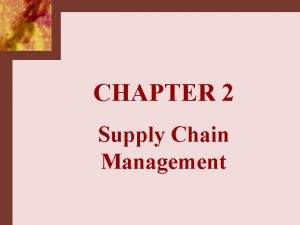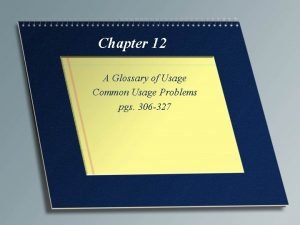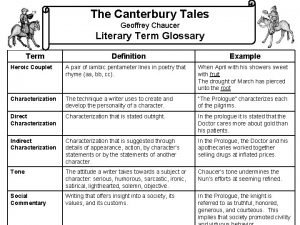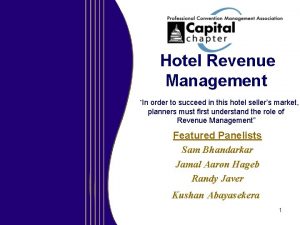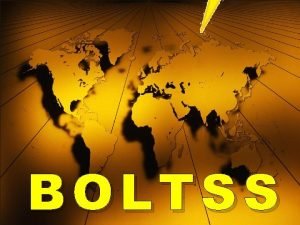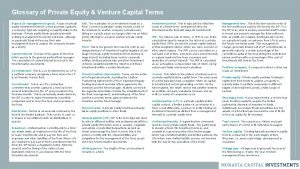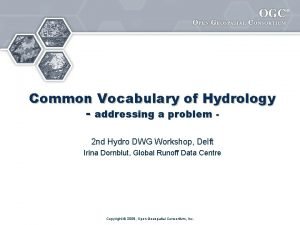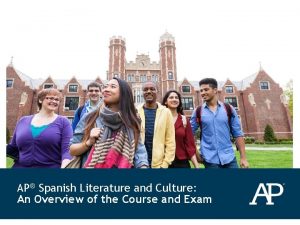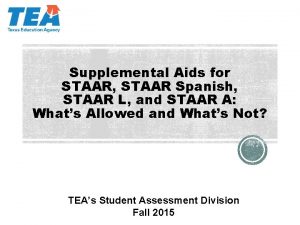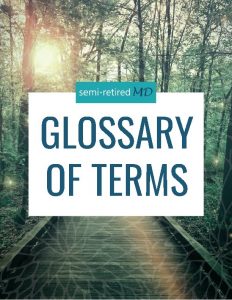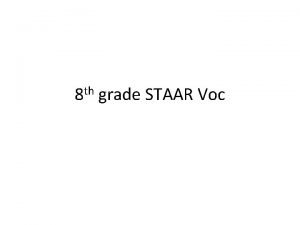Ch 12 15 TEST Review Glossary STAAR Review














- Slides: 14

Ch. 12 & 15 TEST Review Glossary & STAAR Review

Mc. Culloch v. Maryland (1819) Supreme Court case heard by the John Marshall led court. The case centered around a state tax on the 2 nd National Bank of the U. S. The head of the Maryland branch, Mc. Cullough, argued that as a national institution they were not under the jurisdiction of a state tax and refused to pay it. The state sued and the court’s opinion was that the state tax was unconstitutional. Gibbons v. Ogden (1824) Supreme Court case heard by the John Marshall led court. The case centered around Thomas Gibbons wanting to utilize his federal license to operate a steamboat from New York to New Jersey. Aaron Ogden held a New York state license as the monopoly on steamboat travel and sued Gibbons to stop the competition. The court’s opinion stated the state law was in conflict with the Constitution and was unconstitutional; only Congress could regulate interstate commerce.

Monroe Doctrine (1823) Due to the growing revolutionary ideas in the Spanish colonies of North and South America trying to win their freedom, President James Monroe issued this during his annual address to Congress in 1823. Monroe built on Washington’s precedent of neutrality saying the U. S. would oppose any attempt by Europe to establish new colonies or to restore Spanish colonies in the Western Hemisphere. Henry Clay engineered this compromise in Congress to help ease the growing sectional tension over slavery. Missouri wished to enter the union in 1820 as a slave state but the Missouri Compromise northern states hoped to stop the expansion of slavery and (1820) keep a balance of power in the Senate. So, they allowed the entrance of MO, added Maine as a free state to keep the balance, and banned slavery in any new territory north of the (36° 30’ N) parallel.

John Marshall John C. Calhoun Nominated as the Supreme Court Chief Justice by John Adams in 1801, under the Judiciary Act of 1801. Involved in many key landmark decisions including: Marbury v Madison, Mc. Cullough v Maryland, and Gibbons v Ogden. Decision in the Marbury case led to the growth in power of the judicial branch by incorporating the principle of judicial review. Decisions in the Gibbons and Mc. Cullough case helped to grow the strength of the court and federal government. Congressman from South Carolina who was a War Hawk, prior to the War of 1812. Was an advocate for Henry Clay’s American System, especially for the internal improvements on transportation.

Henry Clay Daniel Webster Congressman from Kentucky who was a War Hawk, prior to the War of 1812. Proposed what became known as the American System which called for: a 2 nd national bank to unify the currency, a protective tariff to support U. S. manufacturing, and government funded improvements to transportation (like the Erie Canal). In 1820, he proposed the Missouri Compromise to Congress. U. S. Senator from Massachusetts; Successful lawyer who defended the national bank and won its case against the state tax in Mc. Cullough v. Maryland; defended Gibbons and won in the case dealing with interstate commerce in Gibbons v. Ogden;

Founding Documents Revolution Events ec. of Ind. Marbury v. Madison=Judicial Review exington aratoga rticles of Confed. Valley Forge onstitution Jamestown orktown -1 st G v. O = Gibbons vs. Ogden Interstate trade Mc. C v. M = Mc. Culloch vs. Maryland – Fed gov’t supreme DS vs. S = perm. English settlement Mayflower Compact – 1 st system of selfgov’t Declaration of Independence – Freedom from Englsih Rule New England Middle Colonies Constitution –Replaced Article of Confed. subsistence farming, good soil, warm climate Long winters, rocky soil, timber, fishing, shipbuilding, whaling Louisiana Purchase – Doubled size of US Southern Colonies Hot climate, fertile soil, cash crops, plantation system Appalachian Mtns ippi siss Mis Louisiana Purchase 1803 US in 1783 R. Rocky Mtns. Adams-Onis Treaty (1819) Florida Adams-Onis Treaty (1819)

Super STAAR 130 Greatest American History Facts: Colonization thru Reconstruction James Monroe: 74. James Monroe: 5 th President & author of the Monroe Doctrine, which shut down the western hemisphere to European expansion or interference. But I was prez, so the credit go to me! I wrote it ‘cause I’m smrt. John Quincy Adams Sec. of State

Super STAAR 130 Greatest American History Facts: Colonization thru Reconstruction Industrial Revolution 75. Industrial Revolution: industry changed from the production of goods at home (cottage industry) to factory production using powered machinery. Boott Mill, Lowell Mass.

Super STAAR 130 Greatest American History Facts: Colonization thru Reconstruction Robert Fulton 76. Robert Fulton’s steamboat improved transportation of goods and people during the Industrial Revolution. 5 miles an hour! Wooooooohooooooo!!!! We’re flyin’ now boys!! I’m on a BOAT!!!

Super STAAR 130 Greatest American History Facts: Colonization thru Reconstruction 77. The Telegraph , invented in 1835 by Samuel Morse (Morse Code), made communication more efficient across great distances. It would become an important tool in the North, during the Civil War.

Super STAAR 130 Greatest American History Facts: Colonization thru Reconstruction 78. Textile Mills Thief: Samuel Slater Importance: Led to large-scale factory production of cloth through the use of power looms. Provided new job opportunities for young women.

Super STAAR 130 Greatest American History Facts: Colonization thru Reconstruction 79. Interchangeable Parts Inventor: Eli Whitney Importance: Allowed factories to make products faster & cheaper. Parts could be replaced easily if broken.

Super STAAR 130 Greatest American History Facts: Colonization thru Reconstruction 80. Cotton Gin - 1793 Inventor: Eli Whitney Importance: Allowed for . E e l i W oyote fast separation of cotton from seeds, greatly increasing profitability of cotton. This made the use of slavery on plantations essential to cotton farmers in the South.

Super STAAR 130 Greatest American History Facts: Colonization thru Reconstruction 81. The Missouri Compromise of 1820 made slavery illegal North of the 36° 30’ line. From 1820 to 1850, newly admitted states above the line would be free states, while new states below the line would be slave states.
 Staar review games
Staar review games Cscmp logistics definition
Cscmp logistics definition Glossary of usage
Glossary of usage Word
Word Chaucer glossary
Chaucer glossary A thousand splendid suns the kite runner
A thousand splendid suns the kite runner What is revpor
What is revpor Larawan ng ibat ibang bahagi ng aklat
Larawan ng ibat ibang bahagi ng aklat Business intelligence glossary
Business intelligence glossary What does boltss stand for in geography
What does boltss stand for in geography Social studies grade 8 textbook our worldviews
Social studies grade 8 textbook our worldviews Managed futures glossary
Managed futures glossary Private equity glossary of terms
Private equity glossary of terms International glossary of hydrology
International glossary of hydrology Ap spanish lit themes
Ap spanish lit themes

